Underground Tibetan Amdo Dumplings
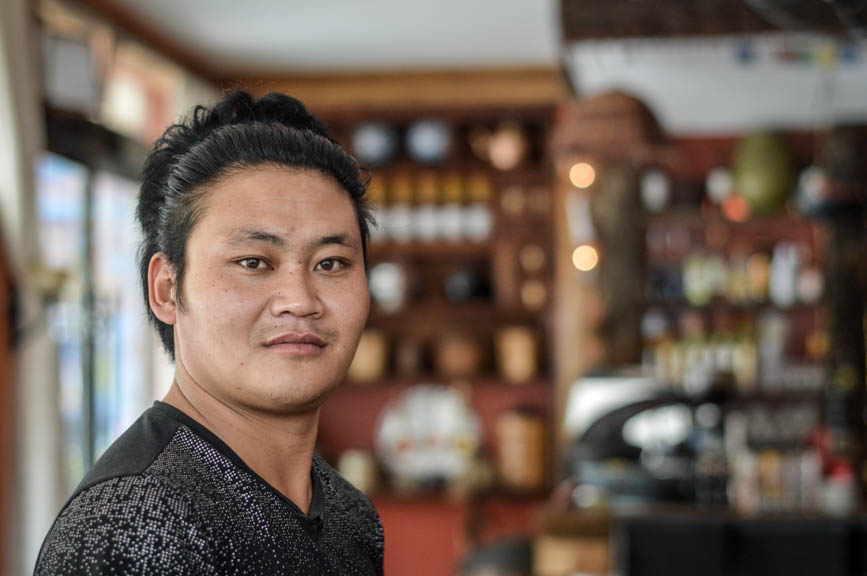
These are not momos. The well-known Tibetan and Nepalese dumplings go very well with images of high Himalayan mountains and icy winds, hot succulent gems to warm your soul from the inside out. These dumplings however go by a different name; these little bursts of juicy meat wrapped in pockets of dough accomplish the job of heating up your fingers and toes just as nicely.
On a grey rainy day in Xiahe, China, we descended into a dimly lit basement kitchen to try our hand at making Tibetan Amdo dumplings.
Amdo ཨ༌མདོ , is a traditional Tibetan region which now resides mainly in the Qinghai and Gansu regions of China. It is the birthplace of the 14th Dalai Lama and home to many important Buddhist monks who had a strong influence on the religious and political development of Tibet. It is also a region that was largely affected by Hui muslim warlords and a muslim culture still evident in the food practices today.
While in Xiahe/Labrang, we met Wandhikhar and Sonam, respectively the owner and Tibetan chef at the Nirvana Hotel in town. When we mentioned we were interested in learning about Tibetan food, they both said, “just come join us in the kitchen!”. And thus we took the narrow steps down to the spotless kitchen where the temperature dropped a further degree or two.
The L-shaped kitchen was split into two corners, a western style section for Tibetan and western food that could have been a home kitchen in any european country; and a Chinese corner – a large blackened wok waiting over a flaming stove and rows of pungent spices and herbs ready to be thrown in.

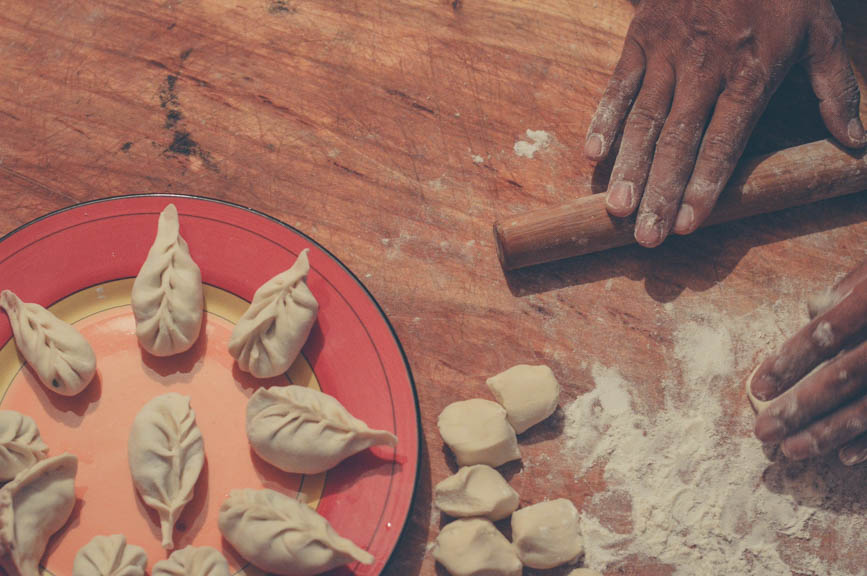
Sonam starts by showing us how to make the filling, slicing up a head of cabbage with two chunky cleavers at the speed of light, making sure to use the chopping board dedicated to vegetables or cooked food. In most professional chinese kitchens you will find chopping boards for raw meat (生) and chopping boards for cooked food (熟) clearly marked, a way to keep bacteria from contaminating finished dishes. (a tip useful for all kitchens that my mother used to remind me of all the time)
We mix up the yak meat filling and vegetables by hand, tasting the fatty raw meat to make sure there is enough salt before putting it aside and getting our muscles ready for the dough. Into an industrial sized metal bowl go the flour and water suddenly turning into an elastic dough ready to be rolled into little pillowy wrappers. Sonam tackles the dough like he has done it a million times, his mother’s love of dumplings passed onto him through cooking together when he was a child.
Growing up in Qinghai, China, Sonam then moved to Dharamsala, India where he learned to cook dishes beyond his family’s kitchen.


We start wrapping the amdo dumplings, Sonam shows me two techniques – half-moon and traditional amdo (much harder).
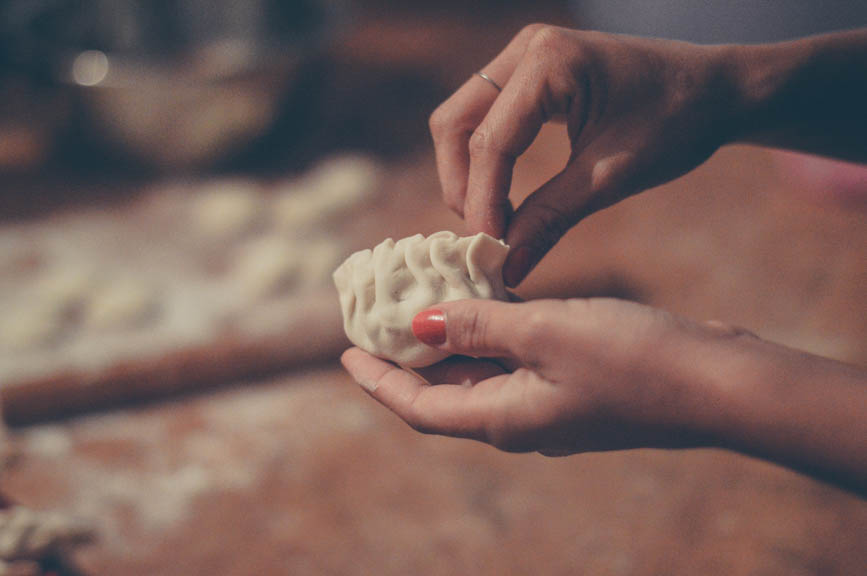
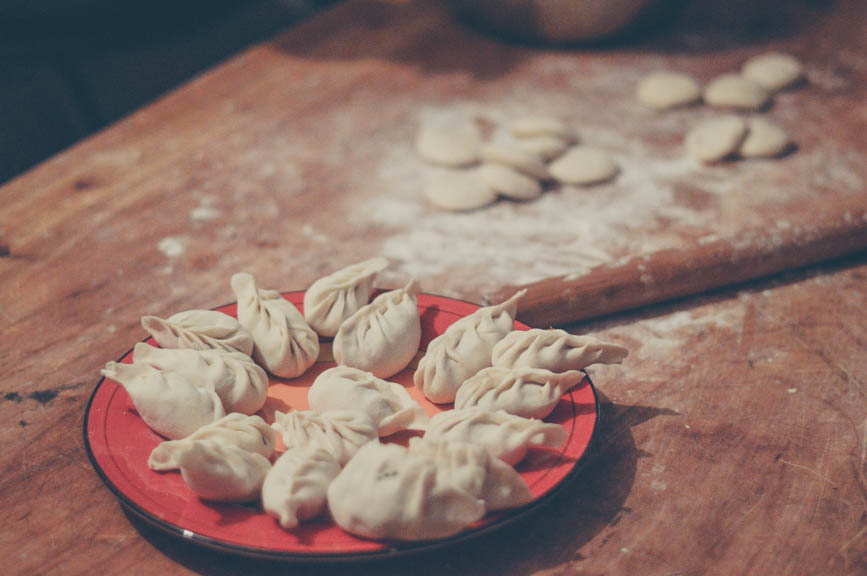
I manage to produce about one dumpling for Sonam’s every four and I desperately hide mine in a corner to avoid Nico’s camera lenses. Yes, most of the gorgeous dumplings you see in the photos are embarrassingly not mine. Wandhikar joins us and demonstrates another wrapping technique looking more like mini-empanadas, half moons shapes with a flirty edge. He also puts my “technique” to shame, finishing about half of the wrappers in a fraction of a minute, no more nonsense, everyone is hungry and waiting for lunch.

Finally we have rows and rows of dumplings ready to be dropped into the boiling broth that has been simmering behind and we resurface with a humongous pot of floating treats.
Everyone gathers round the dining table upstairs, a place frequented by monks and foreigners alike, the dining room upstairs always has willing eaters. Bowls of dumplings and broth are dished out and quickly slurped up. Empty ones are replenished with round two as we heat up against the cold air outside and discuss Sonam’s love life. Wandhikhar makes fun as Sonam blushes and says “no, no no, difficult questions!” Wandhikar says, “No more Tibetan girlfriends for him, too much heartbreak, maybe we could find him a Korean girl instead,” and we all laugh as Sonam nods away.

TIBETAN UNDERGROUND AMDO DUMPLINGS མོག་མོག \amdo dəmplɪŋz\
This recipe was made in much larger quantities, so most ingredient measures are estimates, but both the dough and the filling are very forgiving, Tibetans don’t measure anything themselves! So give it a go and let me know how it works out, depending on the humidity, you should be able to adjust the water amount in the dough. Have fun!
Serves 4
For the dough
4 cups white wheat flour
1 cup water
Place the flour in a large bowl and make a well in the middle. Add the water gradually and mix in with your hands. The dough will start out crumbly, then continue adding water until the dough comes away from the sides of the bowl. Make it into a ball, cover the dough with cling film and set aside.
Prepare the filling.
For the filling
2 cups of minced yak meat or fatty beef or pork
2 cups of finely shredded cabbage
1/4 cup finely chopped onion
1 tbsp minced garlic
1 tbsp grated ginger
1/8 finely chopped chives
1 tsp sesame oil
4 tsp salt
1 tsp white pepper
Mix all ingredients in a large bowl and set aside.
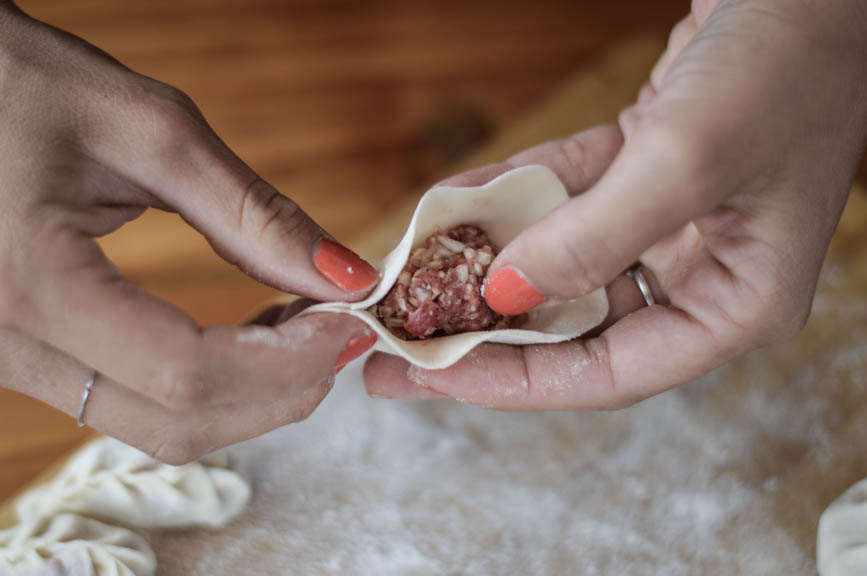
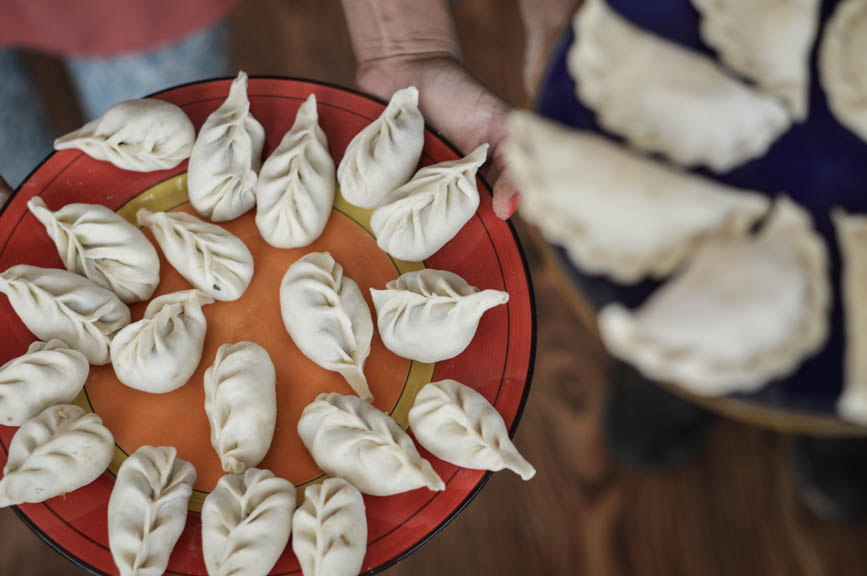
To wrap
Start by preparing your surface. Sprinkle a clean tabletop with flour and turn out your dough. This is where the real muscle work is involved, you will need to knead the dough for about 4 minutes. It does not sound like much, but you will feel it. Using the palm of your hand stretch the dough out and fold in the edges, repeat. The dough should have some bounce, but leave an imprint when you press your finger into it gently.
Now slice off a piece of dough and roll it into an oblong. Rips off little pieces, forming cubes of about 2cm. Roll each piece into little cylinders with your palms. Then press down on each one with your index finger and middle finger folded so that there is a small ridge in the middle of each cylinder. Take a rolling pin and gently but rapidly roll them out as you spin the circle with your other hand, this should form perfect circles for the wrapping. (it takes awhile to get used to!)
Your wrappers are now ready to be filled.
Take a teaspoon of filling and place it in the middle of the wrapper. Fold the wrapper in half and seal the edges into a half moon shape. Start at one side of the half-moon shape and pinch and fold towards the other side so that the top of the edge is decorated with tight creases.
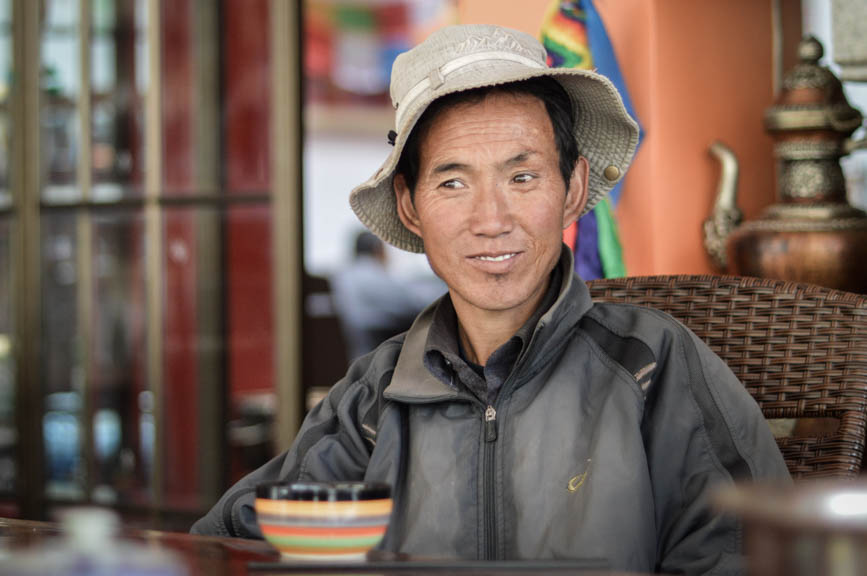
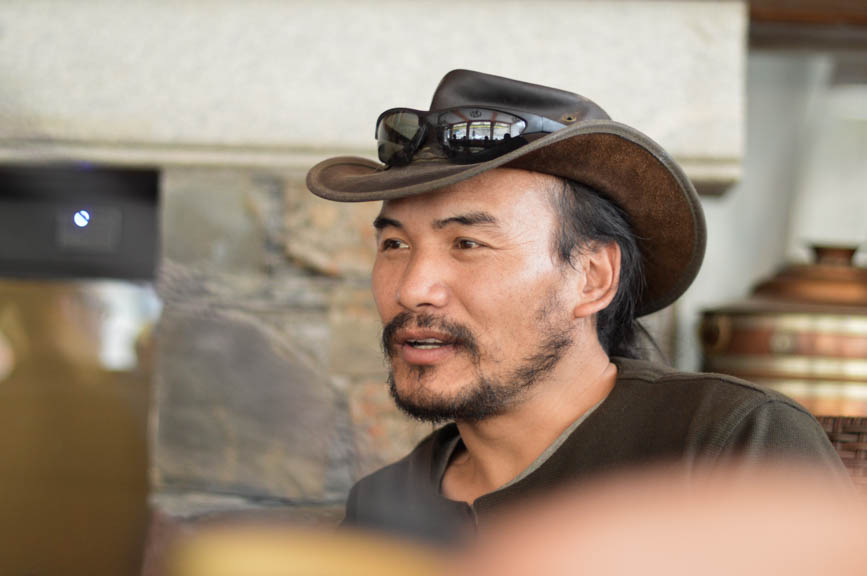
To cook & serve
large bunch of spinach leaves
2 cubes of beef bouillon
2 cloves of garlic
small stalk of ginger
4 tsp white pepper
8 cups water for boiling
salt to taste
While wrapping the dumplings, bring a large pot of water to boil and throw in the rest of the ingredients.
When ready, gently drop in the dumplings and lower the water to a simmer. Add salt to taste. For meat dumplings it should take about 10 minutes or at least until the dumplings float to the surface.
Feel free to experiment with different fillings. Serve the dumplings in bowls with some of the broth and if you want with some chilli sauce and soya sauce on the side.
Perfect for a chilly autumn’s day.
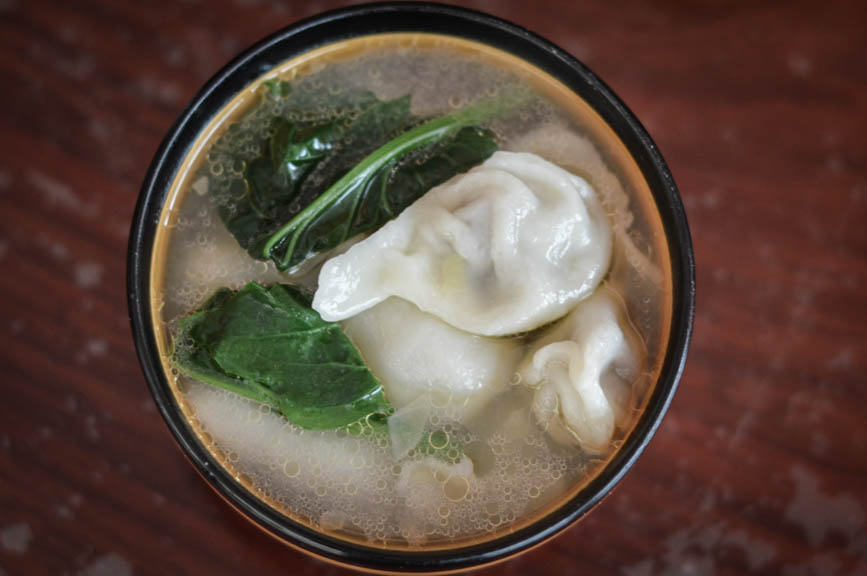











1 Comment
Essen ist auch eine Sehenswürdigkeit | c'est clairette
September 20, 2016[…] deshalb aufgemacht, fremde Erdteile mit aufregender Esskultur zu erkunden: Albanien, Iran, Myanmar, Tibet, Vietnam, Hanoi. Ich habe noch nie darüber nachgedacht, nach Albanien zu fahren. Aber diese […]